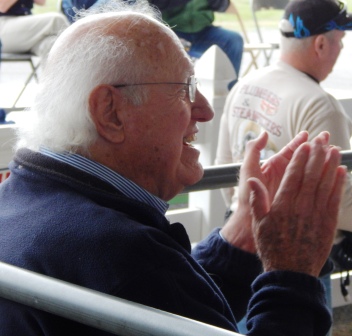 Former Governor Julian Carroll wasn't able to pick his successor. Back in the day, Kentucky politics was controlled by either the "machine" or special money interests like big coal or railroads.
Ford Reorganization of State Government 1972-74
At the dawn of modern Kentucky, fights for who would be Governor, Wendell Ford (D) beat Louie Nunn (R) in the 1972 election. This is the point in Kentucky political history that total change embraced the Office of Governor.
The Administration of Louie Nunn was scrapped. In place of over three hundred boards, commissions, state agencies, and special interest which had become influence silos, Ford created seven state cabinets. Modern management of the 1970s was replacing the tired management style from the 1950s and 1960s.
The more practical by product of such a massive reorganization of state government was under the rules of merit system, the new Governor Ford could wipe out total agencies where most employees were Republican as long as their agency was being abolished or reorganized.
Almost overnight Ford installed a new structure of Democratic senior management totally loyal to him.
Carroll Local Party Structure
In 1975, when Ford appointed himself to be Kentucky's US Senator, Lt. Governor Julian Carroll, from Paducah, Kentucky became the next Governor.
Carroll continued to modernize the federal-state-local system of government. With creation and admiration of the Area Development Districts, The Governor could control the flow of all federal funds coming into Kentucky.
New federal monies were now available for state and local projects. These were the "good happy years" of being an elected official in Kentucky.
Carroll was able to build and developed a new two part political system. The first part was group of locals totally committed to Senator Wendell Ford.
The second was a new group of local Democratic Party leaders added by Carroll, loyalists to the Office of Governor. These people delivered votes on election nights. By 1979, some 85 counties had strong Democratic Party structures.
John Y. Brown and Bombshell of 1979 Election
Governor Carroll could not succeed himself in the election 1979. However, his team had a plan. They would run a new bright face for governor who would be a great friend to Carroll. His name was Terry McBrayer.
Orders were given. All county Democratic parties were to push vote getting and money raising for McBrayer.
Enter a new force of political heavy weight. Its name was John Y. Brown. He broke through the rural counties by being a calamitous new face with a glamorous Miss America wife, Phyllis George Brown. Often they would enter a small town by way of helicopter, a new and exciting way for politicians to visit.
Brown's principal path for victory was to roll up the urban interstate votes from Bowling Green, Elizabethtown, Louisville, Frankfort, and Lexington. McBrayer never had a chance.
Starting in 1980, with the election of Ronald Regan for President, Brown as governor crashed most of what progressive steps Wendell Ford and Julian Carroll had accomplished from 1792 through 1979.
As a businessman, Brown didn't like to work with local officials.
Local Democratic Party organizations ceased to exist during the Brown Administration.
Political Reality Aftermath
From 1980 to 2018, the concept of an unified and strong Democratic Party has been on life support, dying a slow death at each statewide election. It is a myth that there exist two equal political parties that fight the good fight for control of government. At the very least, there now exists the Republican Party, the Democratic Party, the Tea Party, the Bevin Party, the Trump Party, the Teachers' Party and the Union Party.
After almost forty years, the stakes could not be any greater than now. Somewhere in the future plans and getting the vote out, a new and different Kentucky will take shape.
The question is, what type of state will it be - for the rich, for the poor, for the middle class?
|







